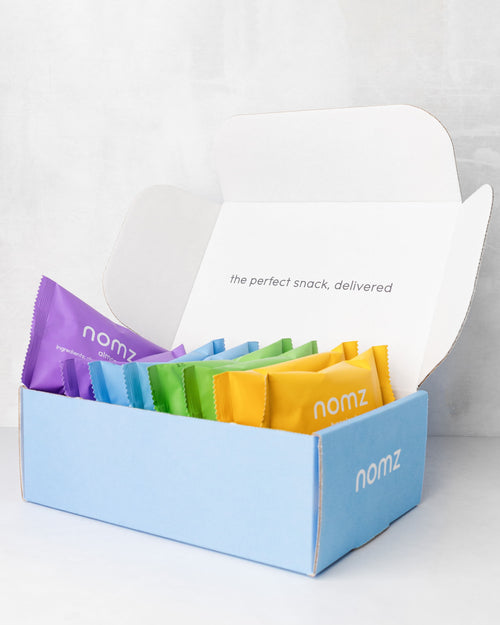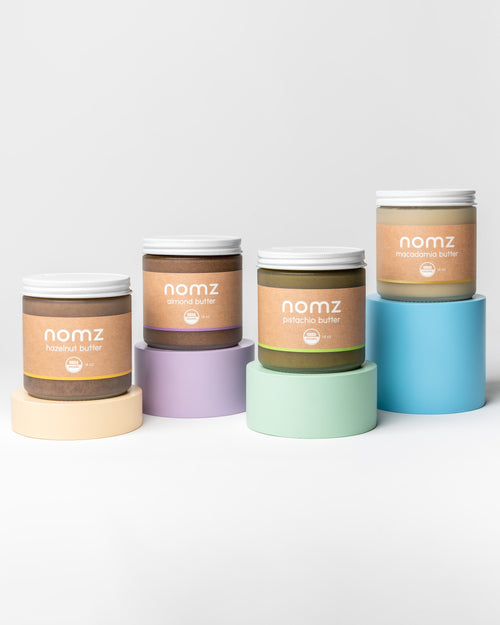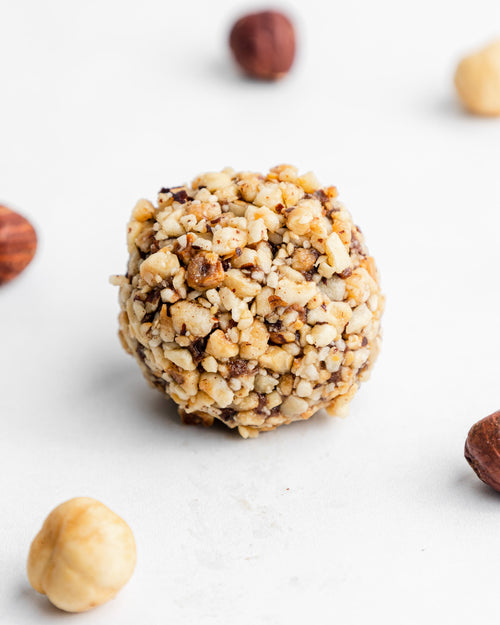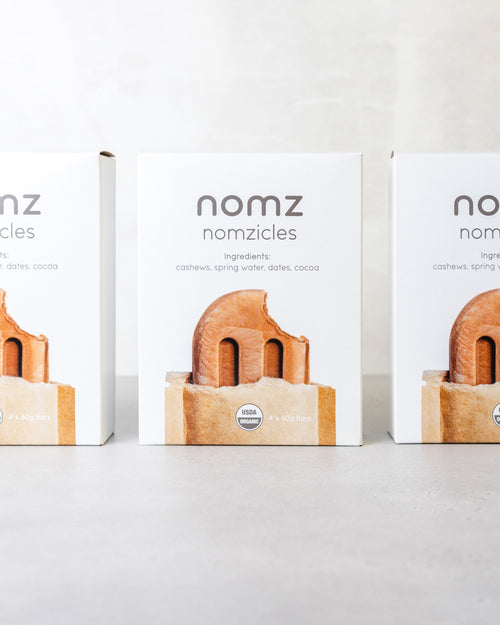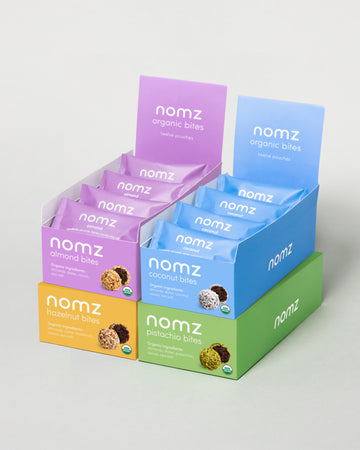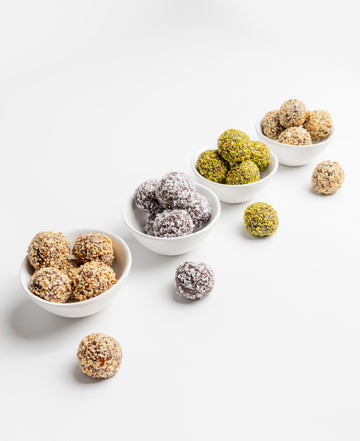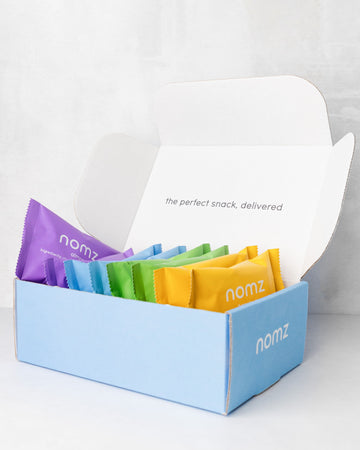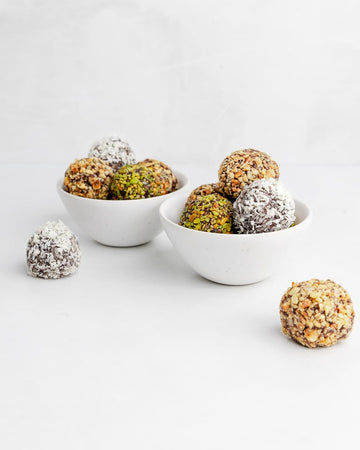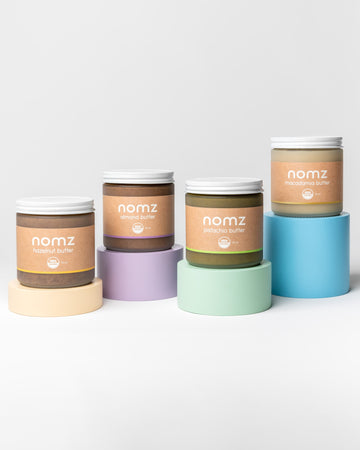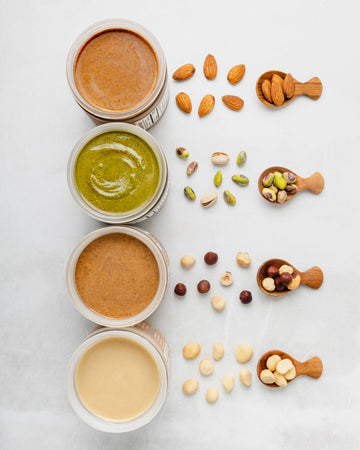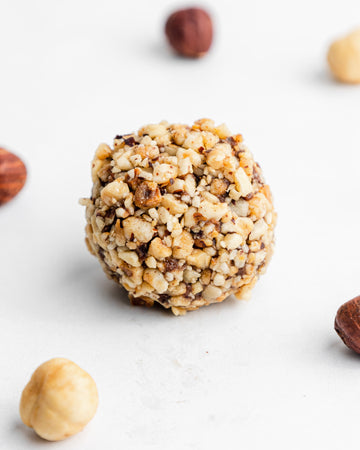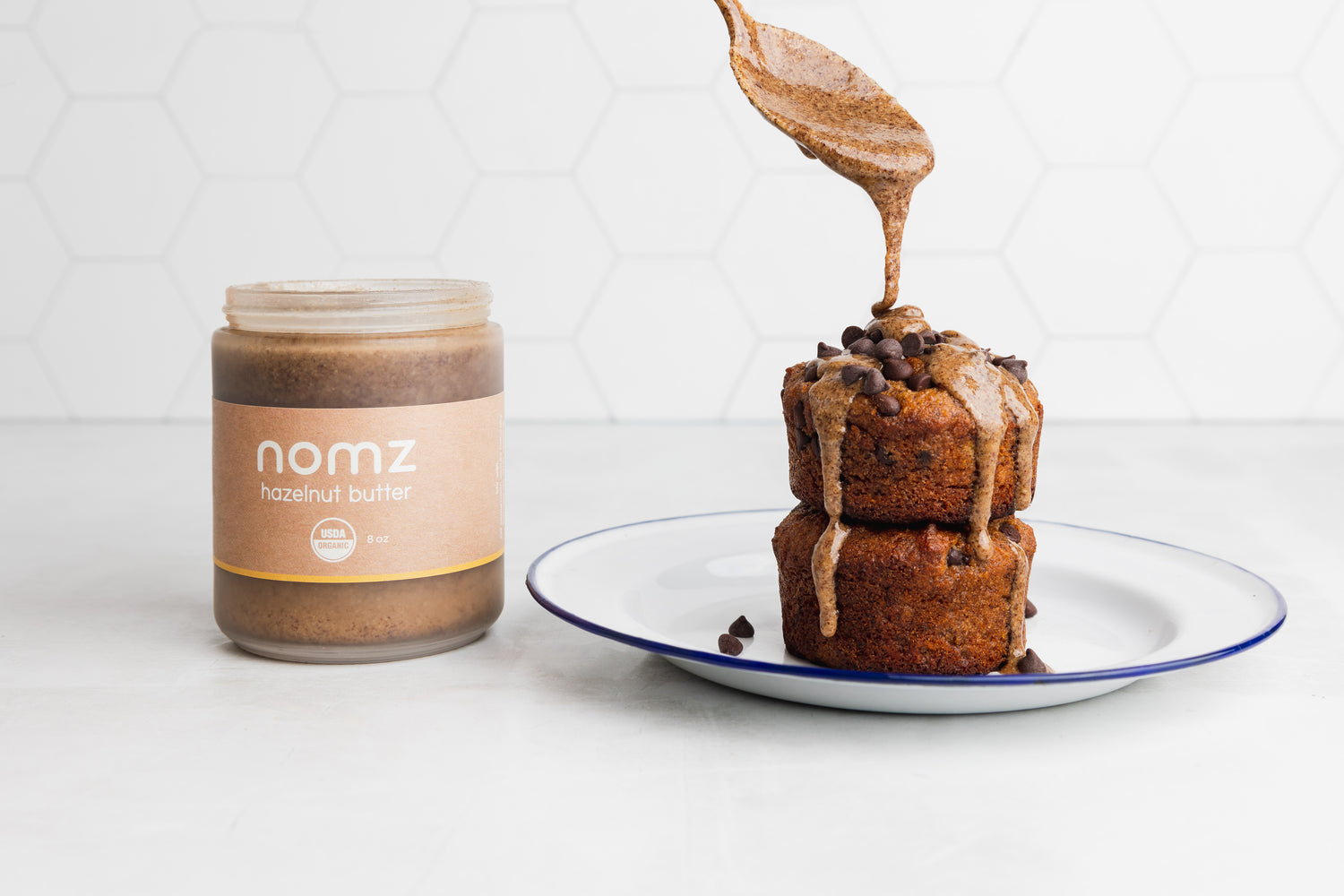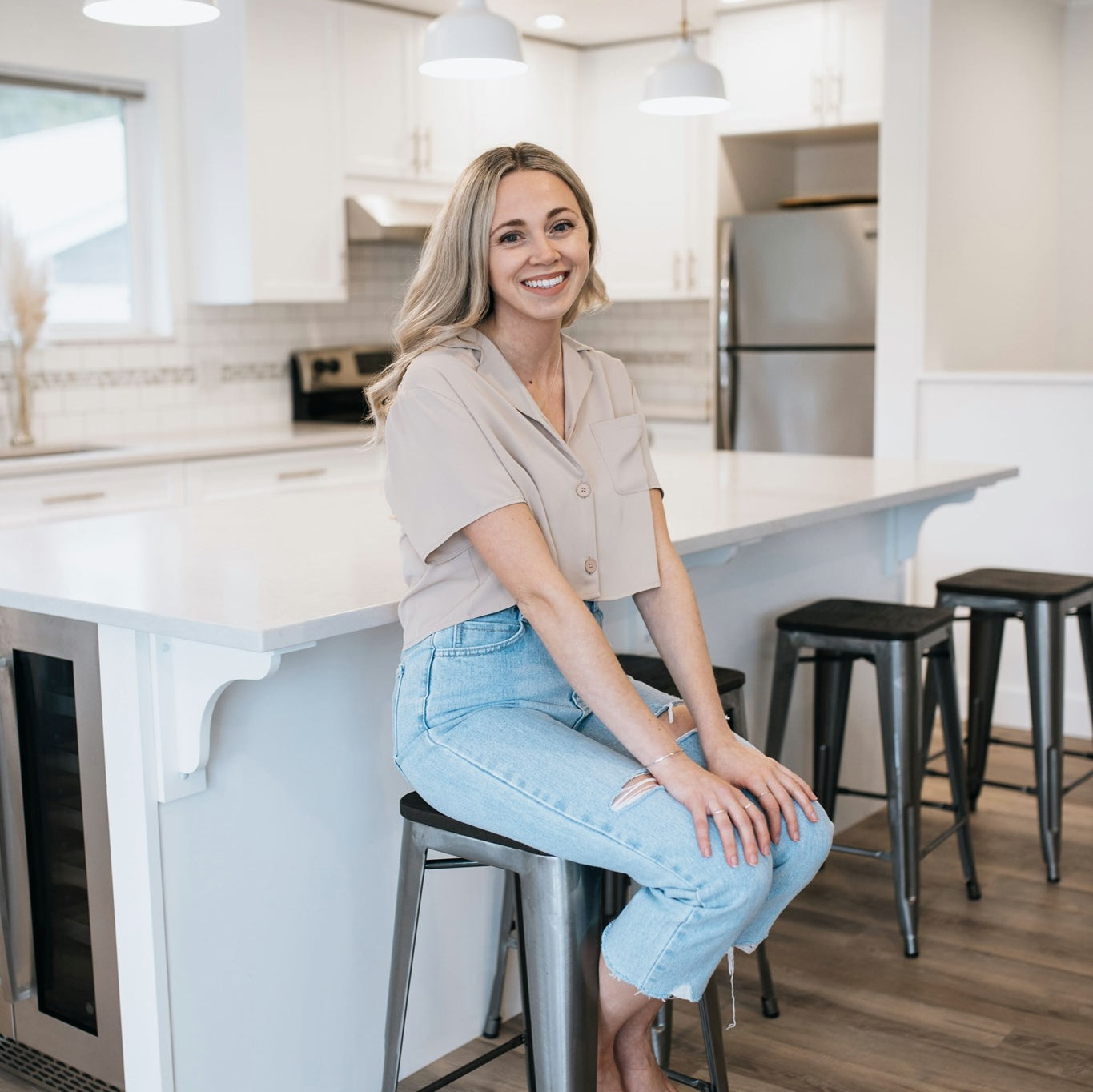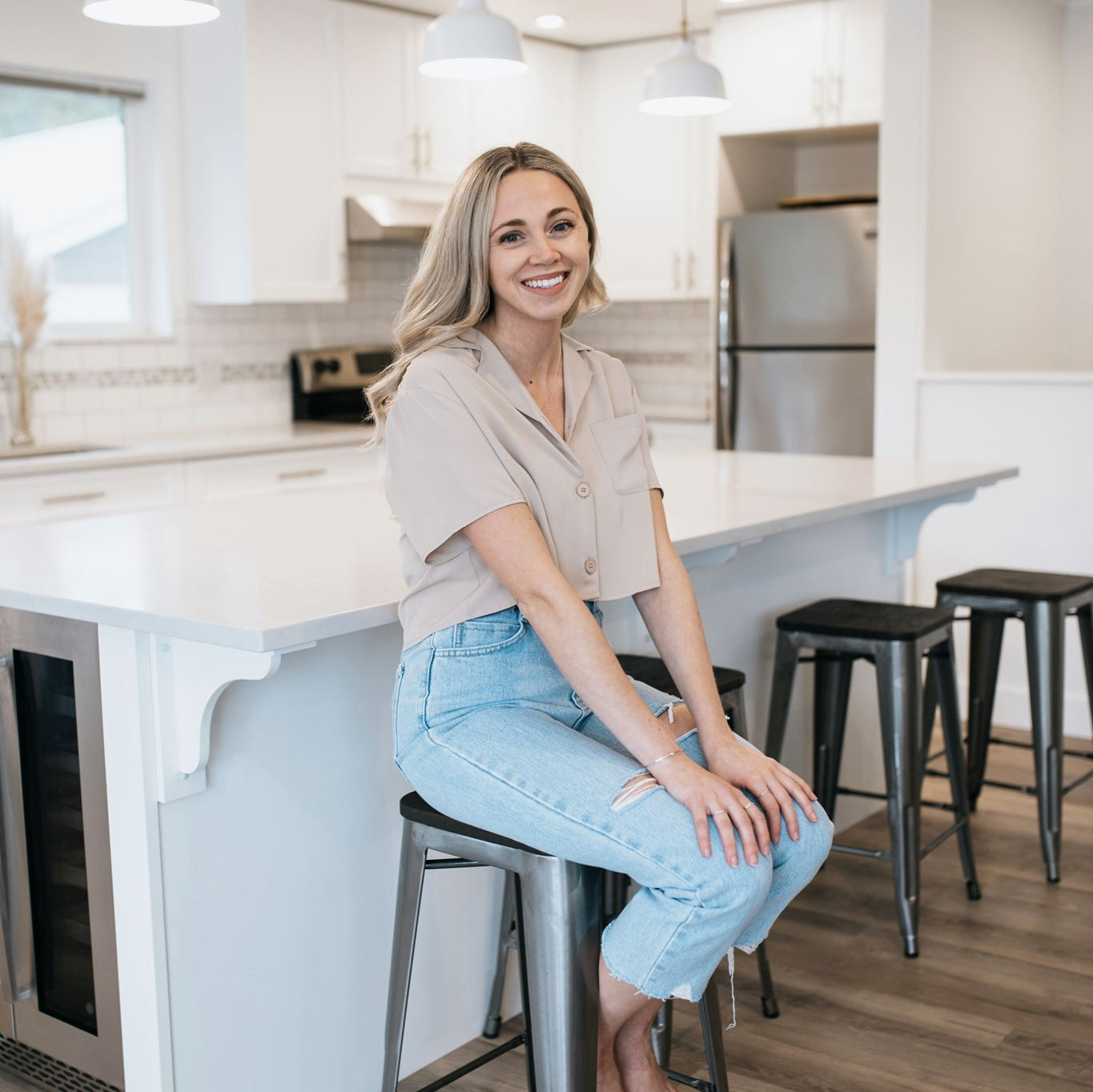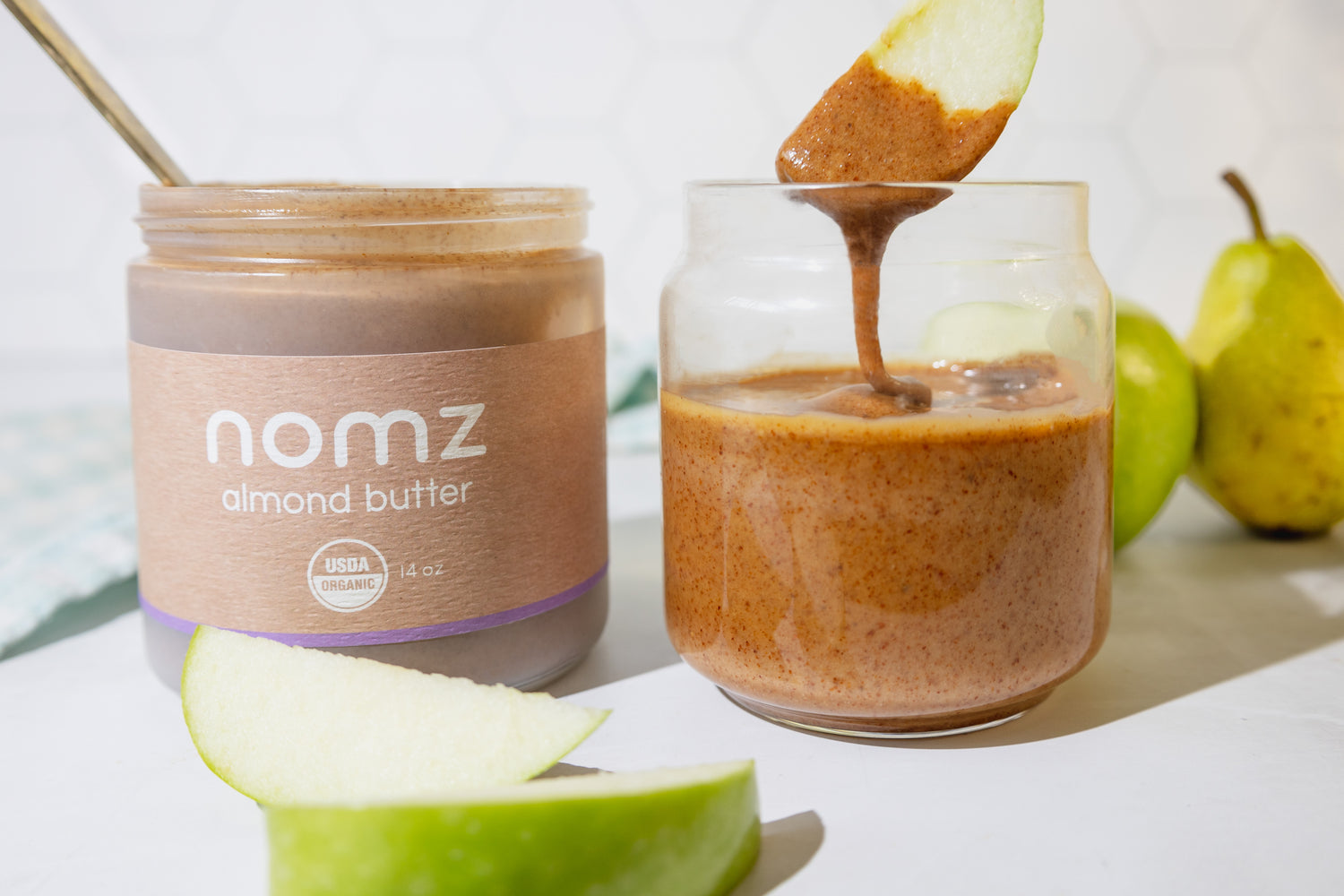MRKH + Building Your Mental Wellness Toolbox
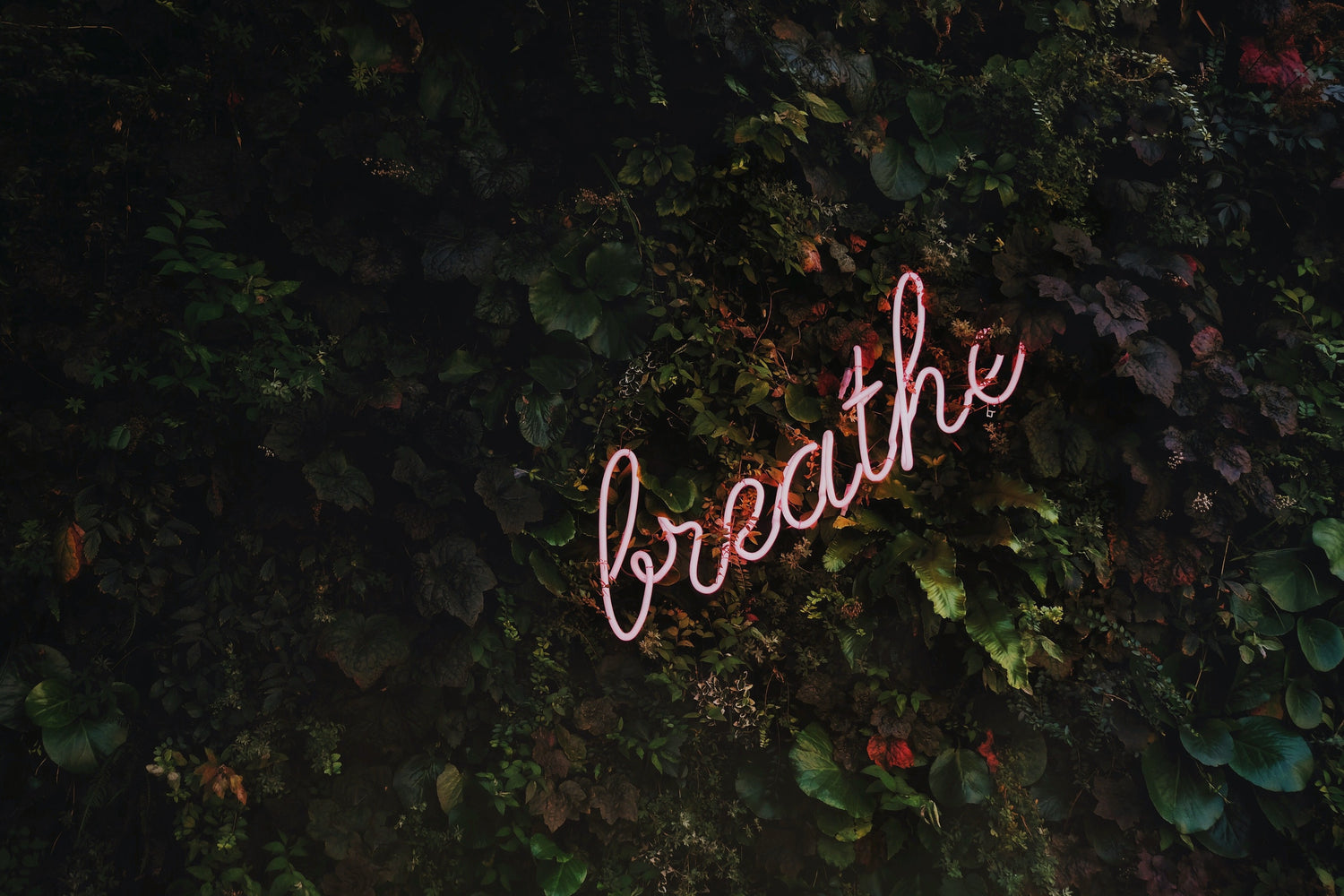
Hey, I’m Kylie – and I’m really glad you’re here. I’m a creative soul, a writer, a dog mom, a proud member of the nomz team and a human of many passions.
Over the last decade, I’ve become very passionate about taking care of my mental health and strengthening my mindfulness practice.
Taking care of our mental health is just as important as taking care of our physical health. But, so often we only make moves to take care of our mental health after we feel it slipping. The reality for many of us is – we’re not practicing self-care, we’re practicing after-care.
Of course, a bath is lovely, but it shouldn’t come as a response to being unable to sleep – or deciding to get back into meditation because you had a panic attack at work.
Throughout my mental health recovery journey – I’ve found the most profound healing by developing a mental wellness toolbox filled with simple practices I can tune into daily. Building a strong foundation of mindfulness helped me develop a stronger relationship with self – practicing self-compassion and forgiveness, building self-trust, and checking in to see how I’m really feeling.
In this article, I’ll be sharing 6 simple practices and tools I still use daily – that you can start using today! This passion I have was born out of a time in my life where I struggled heavily with my mental health and well-being.
My Personal Story
When I was 20 years old, I was diagnosed with a rare congenital disorder called MRKH and my entire world fell out from under me.
After months of scans and appointments – I sat anxiously in a gynecologist's office. The doctor folded her hands and leaned in. “Kylie, you have Mayer–Rokitansky–Küster–Hauser Syndrome, also known as MRKH.” She paused. It didn’t even sound like English. “You do not have a uterus – you were born without one. You will never carry or bare your own children.”
MRKH affects 1 in 5000 females. The syndrome is a disorder that mainly affects the reproductive system. This condition causes the vagina and uterus to be underdeveloped or absent, although external genitalia is normal. Affected women usually do not have menstrual periods due to the absent uterus. While a regular-length vagina can be formed through invasive physical therapy or surgery – there have only recently been cases of successful uterus transplants.
Because of the vulnerable nature of the subject matter – many females diagnosed suffer alone, in silence. MRKH has actually been named “the silent disease” because of this. Although we've made a movement forward – there is so much stigma surrounding mental health. There is even more stigma and shame entangled in the topic of women’s health. Periods, infertility, miscarriages, or anything going on with reproductive organs – we were taught from a young age that you don’t talk about these things with other people. But if we shouldn’t talk about them with other people – what do we do? Isolation is a breeding ground for shame. The longer you sit alone with that shame – the more it feeds on itself, making it much more challenging to heal.
Rightfully so, this diagnosis knocked my world out from under me. I spent years trying to run away from who I was and numb away the MRKH. After many ups and downs – I knew I couldn’t continue down the path I was on. Someone once told me you have to feel it to heal it – and those are words I live by to this day. Coming back home to my body saved my life and reignited the spark that I thought I had lost. I found my most transformational healing through self-compassion, movement, professional help, and developing mindfulness practices.
I’m honoured to share a bit about MRKH and my journey because I think that the more we can share openly, the more we normalize conversations about mental health reinforcing that no one struggling is alone in their fight.
The following wellness practices and tools are ones that helped me rebuild my relationship with myself from a rock bottom and ones I continue to use on the daily to keep me grounded, connected and present.
I feel it’s important to note that everyone’s practices will differ and are also ever-evolving – so I encourage coming from a place of curiosity and exploration rather than judgement as you find what works for you.
6 Mental Wellness Practices to Strengthen Your Relationship With You!
Track Water Intake
I know, I know! It is such a simple thing, but it truly makes a world of difference. A few benefits of staying hydrated include:
- less brain fog and better brain function
- significantly affects energy levels
- better physical performance
- helps prevent and treat headaches
But… even with strong intentions, if I don’t track my water intake I find I don’t hit my goal. To set myself up for success – I have a drinking glass that I use which holds 1L of water and I aim to drink at least 2 a day. To find out how much water you need to drink per day take your body weight in pounds and divide it by 2. That number is how many ounces of water you need per day! Plus it feels good to celebrate small wins – and when I finish my 2L every day, I feel proud of myself!
Nose Breathing
Another simple, yet very effective tool is tuning into our breath – specifically focusing on breathing through your nose.
When you breathe through your nose, it activates your parasympathetic nervous system – the “rest and digest” system. This helps you feel calmer and more relaxed. When you nose breathe, your heart rate and blood pressure are lowered.
In contrast, when you breathe through your mouth, it activates your sympathetic nervous system – taking you into “fight or flight” mode. This signals to the body to release adrenaline and cortisol, preparing it for intense physical activity. When you mouth breath and engage the sympathetic nervous system, you increase your heart rate and blood pressure – and decrease the activity of your digestive and reproductive systems. Ever wondered why you aren’t hungry when you’re feeling stressed? Your sympathetic nervous system is heightened and your fight or flight mode is engaged. Of course, mouth breathing is a healthy biological response to stress, but when you continually breath this way – your body is kept in a constant state of stress.
I like to take 5 deep breaths in and out through my nose throughout my day. I personally set alarms on my phone as a reminder to do so – maybe this will work for you too!
Breathwork is an incredible way to tune into and heal our bodies. The Othership has an amazing breathwork app with guided breathing practices if you’re interested in learning and exploring your breath more!
Tune Into Your Thoughts + Name That Inner Critic
No one is immune to the inner critic! We’ve all been there before – that little voice inside that creeps in when you’re doubting or judging yourself. This voice is usually a negative commentary on who we are or how we behave.
Some common negative inner critic statements include –
Here are 3 steps to help combat the inner critic!
1. Listen In & Notice Your Negative Thoughts
Being able to catch a negative thought pattern in the moment will become one of your most powerful tools because then you can take action. This week, try to listen in and become an observer of your internal dialogue.
2. Name It To Tame It
Once you’ve noticed your inner critique or inner sabeteur spinning those negative thoughts – it’s time to take your power back by naming them.
When we name our inner critic – we are actively separating the negative thought from ourselves. My inner critic’s name is Rude Amy.
When we separate the thought from an “I” statement – for example, “I am not good enough” and instead thinking “Rude Amy says that I’m not good enough” we’re able to create distance between the thought and us. This helps us observe the thought more objectively, recognize that it is not reality and helps us remember that our thoughts are just words, not facts.
3. Get Curious & Offer Self-Compassion
Now that we’ve separated our negative thought from ourselves – we can get curious and offer up some love. At the end of the day, I like to believe Rude Amy has the best intentions for me. If she is telling me that I don’t look good in my outfit and people will judge me – maybe underneath that, she just wants me to be loved and accepted for who I am.
We all have basic needs and wants as humans to be seen, safe, loved, and accepted. I firmly believe that every negative thought pattern is ultimately trying to protect us – but maybe just going about it in an unideal way.
If you’re not sure if you’re being too critical, ask yourself this question: would you say this to your 5 year old self? Would you let Rude Amy tell baby you that they are ugly? No way!
You would tell them to believe in themselves, that they can do anything they put their mind to, and to wear whatever makes them happy no matter what other people think! Treat yourself with that same love and compassion. You deserve it!
The “Of Course” Switch
Now that you’ve started to pay attention to your internal dialogue – the next time you notice you’re beating yourself up, saying things, like why do I feel like this or why can’t I get my work done – try replacing why with of course. This simple language switch is a powerful way to shift from judgement or frustration to self-compassion.
A couple of examples:
- Of course, I responded that way because of x, y, z.
- Of course, I feel like this because I haven’t eaten yet today.
- Of course, I’m not getting my work done – my mind is preoccupied with my sick family member.
When you’re first developing this mindfulness practice – you might not be able to define the “why” part of this statement. Maybe you know you’re feeling frustrated, but you can’t pinpoint why that is. That is completely normal and okay – please don’t beat yourself up! It’s important to remember that developing mindfulness practices are like learning new skills. They take time and repetition.
Journaling
Lisann Valentin, a Shamanic life coach, says “journaling is mindfulness in motion.”
Journaling is an incredible tool to unearth why you are feeling a certain, check-in with yourself, and create stronger awareness. Plus, writing down your feelings about a situation can help you understand it better!
Starting anything new can feel overwhelming and intimidating – so just start small. Commit to writing for 2-3 minutes or following a series of journaling questions to build the habit.
I love using these questions/ prompts when checking in with myself:
- How do I feel?
- You can add something specific here – how do I feel about today, my relationship with my body, my eating habits, my job, etc. It leaves space for you to get specific about something you’re currently struggling with you something you are grateful for.
- How do I want to feel today?
- How do I feel about how yesterday went? What were some wins? Did I catch any Rude Amy thought patterns?
- What can I do today to best support myself?
- List 3 things I’m grateful for and why.
There are tons of incredible journal prompts and questions online to guide you on your journaling journey!
Hold Yourself Accountable
For me, showing up for myself and taking care of myself means holding myself accountable. When we hold ourselves accountable – we’re able to define what matters to us and why.
This week, choose 1- 3 commitments to yourself and write them down. When I was first developing that self-trust muscle, I started very small with actions to hold myself accountable. I find that easing into it this way helps set you up for success!
Beside each of your 1-3 commitments, define why it is important to you and how you will feel when you follow through on it.
I’ll give you an example of how I set it up for myself –
- Action #1: No hitting the snooze button in the morning.
- Why? I want to have time for me in the morning to ease into my day and not feel stressed or rushed while getting ready.
- How will this make me feel? I will feel proud, accomplished, and calm easing into my day.
Following through with what we said we would do helps to build self-trust. But remember, if you do hit that snooze button a few mornings it’s okay! It’s a great opportunity to pratice self-compassion and forgiveness.
At the end of the week, you can go back to your journal and write about how your week went! How did you feel, decide on another commitment for next week or keep them the same.
Here are some other examples to get your wheels turning to build your own list –
- Set alarms to take breaks throughout the work day
- Journaling in the morning for 5 minutes
- Picking an end time for work
- Move my body / do some light stretching
- Meal prep on Sunday to have lunch ready throughout the week
- Book the doctor/dentist appointment
That brings us to the end of my favourite mindfulness tools! I hope that they support you as you venture out on your mindfulness journey.
If you’d like to read more about my journey with MRKH, click here to read my story.
If you, or someone you know, it struggling with your mental health – please remember there is no shame in asking for help. In fact, it is one of the most courageous and powerful moves you can make.
It can be overwhelming to know where to go or who to call – below is a list of wonderful mental health resources in Canada.
- Canadian Mental Health Association
- Kid’s Help Phone
- Crisis Services Canada
- Toronto Distress Centre
- CAMH
- The 519
- Sheena’s Place
- Across Boundaries
- LGBT Youthline
- Black Youth Helpline
- Anishnawbe Health Toronto
- Better Help
- Life Cycle Counselling
If you or someone you know is dealing with a mental health emergency, always call 9-1-1 or your local emegency department.
How do you support your mental health on a daily basis? We would love to know - please share this post and tag us on social media @nomz and let us know the # 1 mental wellness practice that has made a difference in your life!


